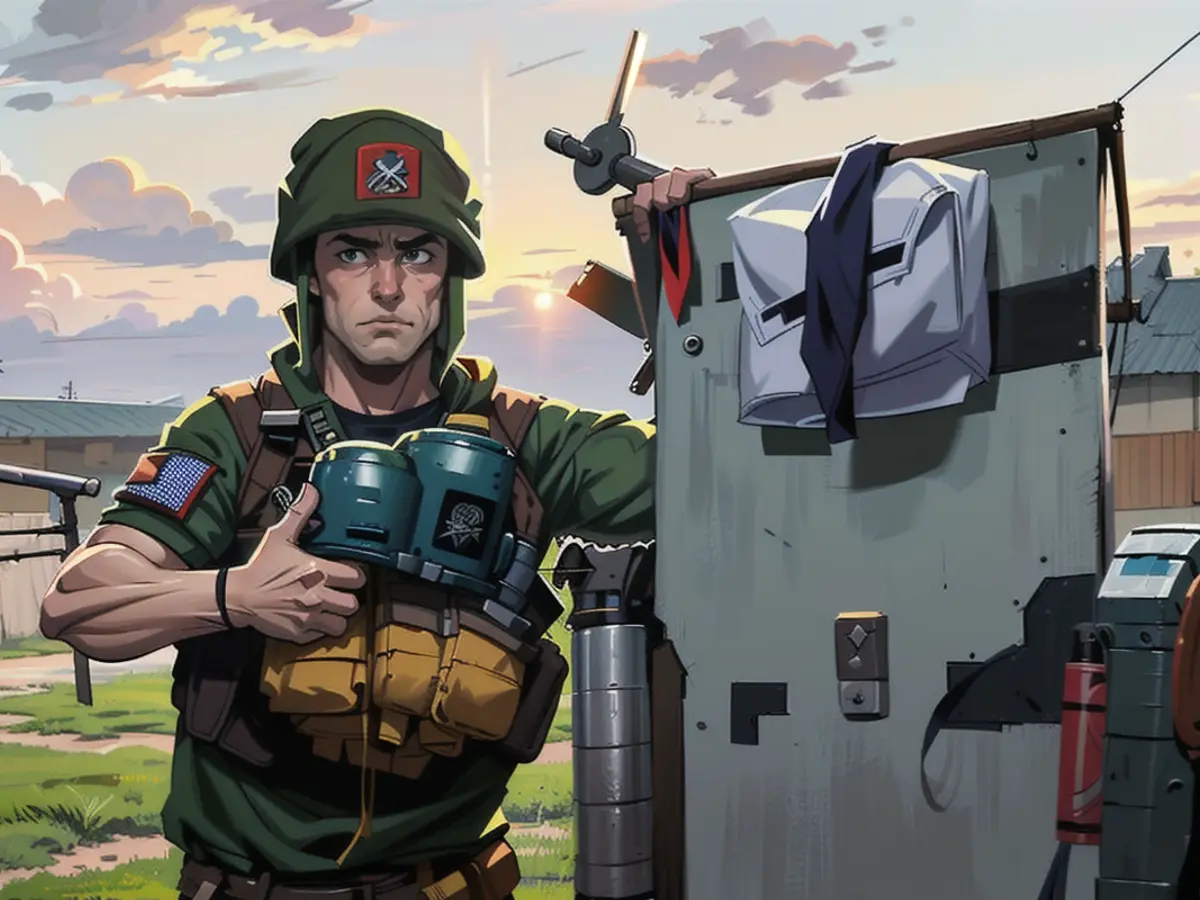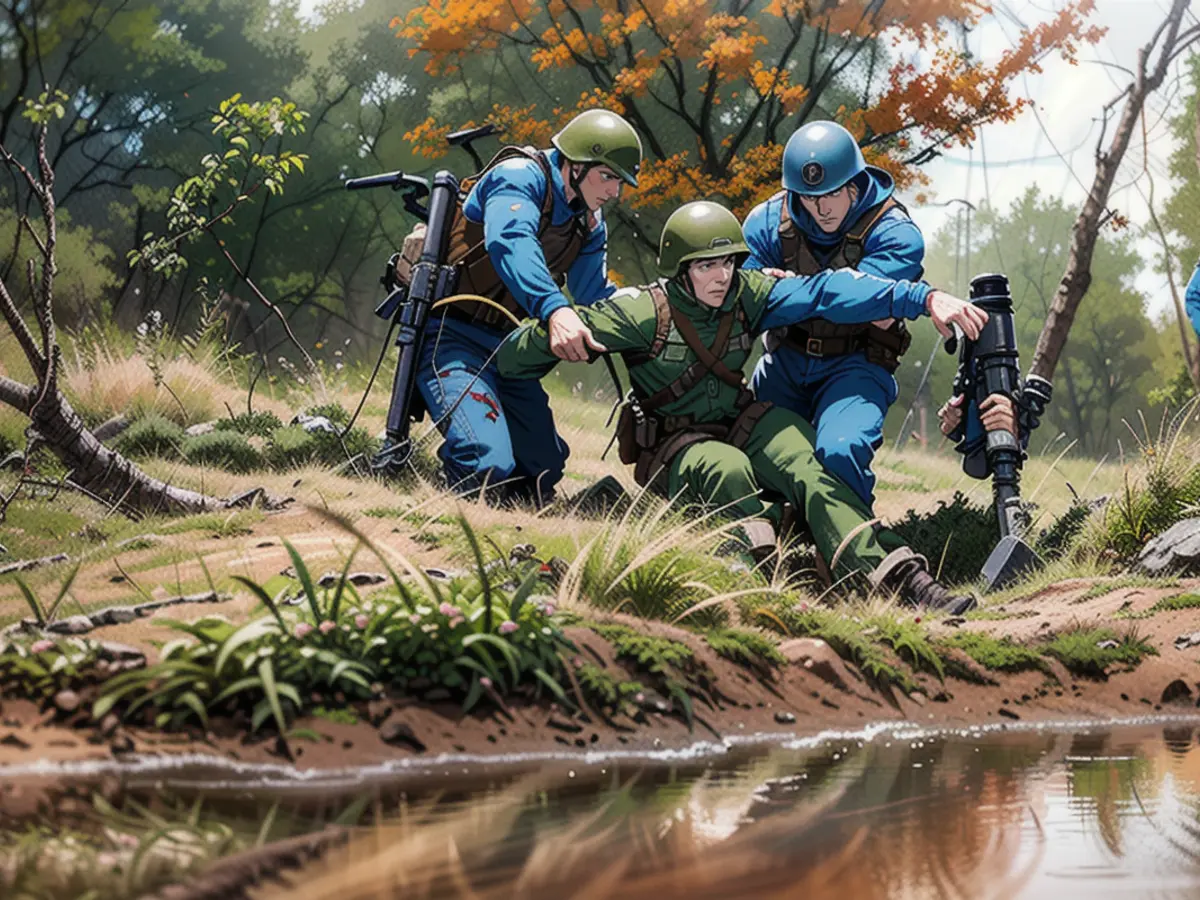Drones used for airlifting injured individuals in Ukraine.
In their fight against Russia, Ukraine is heavily relying on drones for self-defense. These drones are causing significant damage to the Russian navy at sea, and tests with ground drones are underway. However, these aren't for combat purposes but rather to rescue the wounded. Dmytro Mamonov, a displaced person from Slovyansk, teamed up with his children to create medical evacuation vehicles.
ntv.de: Can you explain what electric stretchers are?
Dmytro Mamonov: These are remote-controlled stretchers that should be present in every trench. When a wounded person needs to be transported, they can be taken out and carried away. The device can cover a distance of five to six kilometers.
What's the benefit?
It would take at least two hours to move a wounded person from the transfer point without electric stretchers since it's a considerable distance from the frontline. This is because driving a Hummer or an armored transport vehicle to the frontline is dangerous as they can be easily spotted by drones and attacked. Soldiers have to carry a wounded individual up to seven kilometers using their hands, which is challenging and takes them away from other crucial combat duties. The evacuation team also places itself in danger. With a severely injured person, every second matters, and an e-stretcher can simplify and speed up the evacuation process, giving soldiers peace of mind that even if wounded, they will get required medical aid and be transported to a safe place.
How many people are needed to operate an e-stretcher?
The controls are simple, so an attendant who walks a certain distance away and operates it is all that's required to evacuate a wounded person. They can even help if needed.
Can the responsibility for evacuation be entirely given to unmanned, electronic military transporters?

It's forbidden to evacuate from a distance since if a wounded soldier encounters problems during transportation, the commander who issued the evacuation order bears all the responsibility. So, it's dangerous to send someone without an escort.
What kind of feedback do you receive from the military?
Over 90% of the feedback is positive. The only issue is someone using your product for other purposes, such as carrying supplies when going on duty since they often have to walk long distances. So, they use the ground drone as a logistical aid.
How many drones have you sent to the frontline so far?
More than 50. I've also given the license to the Ihor Sikorskyi Polytechnic Institute in Kiev, where students are now producing electric carriers for the military.
How much does one of your drones cost?
$2,000.

Do you make the entire electric ambulance by yourself?
My children help me.
Your children?
Yes, my thirteen-year-old son worked on the electronics, while my nine-year-old daughter was responsible for the fabric covering the frame. She has also painted various components and now prepares cables and checks the motors. There's a lot of work she can do. But they don't handle the power tools - I take care of the mechanical part.
Have you found any investors?
I was searching for an investor to produce this tool and promote its use in the army, but sadly, nobody was interested as it's a low-budget product. So, my strategy is to send drones to the frontline, and as they gather recognition, it will help me find a more serious investor.
Why did you choose this concept?

I'm an internally displaced person, meaning I've lost my roots and am in limbo. If I don't do anything meaningful, my life becomes pointless.
Read also:
- Year of climate records: extreme is the new normal
- Precautionary arrests show Islamist terror threat
- UN vote urges Israel to ceasefire
- SPD rules out budget resolution before the end of the year
The ongoing 'Attack on Ukraine' has led to extensive 'Military operations', with both sides utilizing various tactics and technologies. Notably, Ukraine is utilizing drones not only for rescue operations, such as airlifting injured individuals, but also for defense purposes, causing significant damage to the Russian navy. During interviews, Dmytro Mamonov, a displaced person from Slovyansk, discussed the use of electric stretchers, which are remote-controlled devices used to transport wounded individuals overlong distances, avoiding dangerous situations and speeding up the evacuation process.
Source: www.ntv.de








